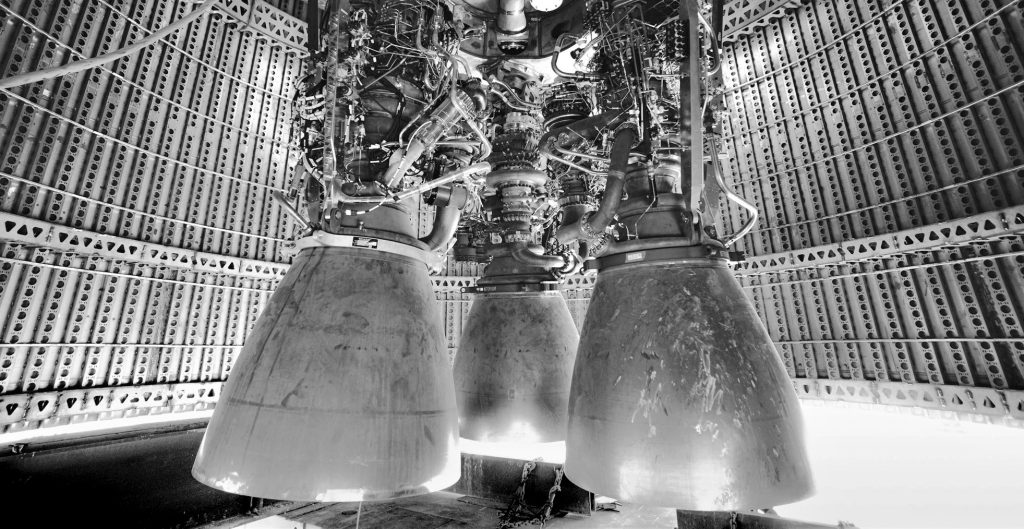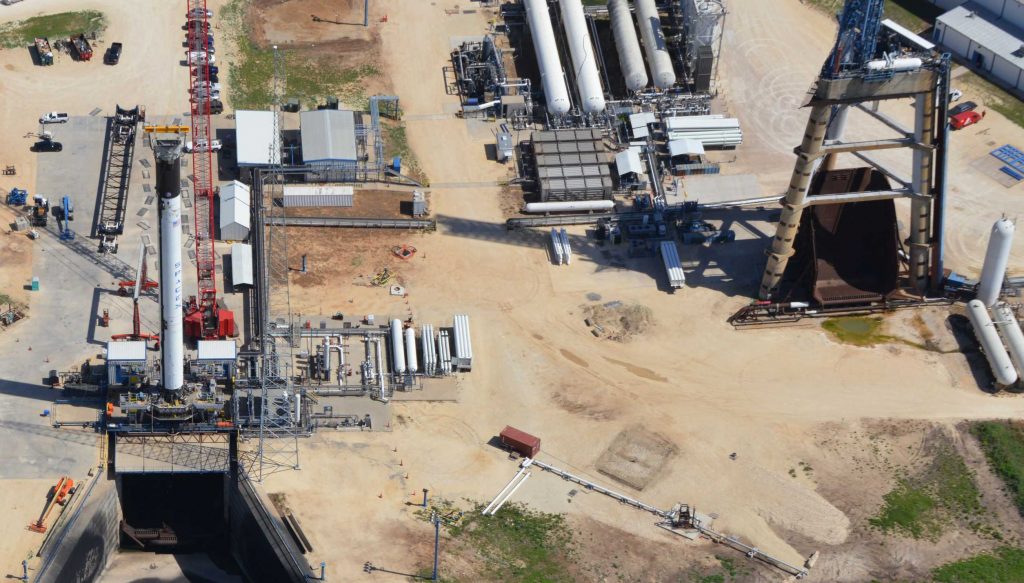SpaceX recently debuted a new rocket engine test stand at its Central Texas development facilities and one specific aspect of the so-called ‘tripod stand’ could make life a lot easier for Starship’s Raptor engine engineers.
The success of SpaceX’s extremely ambitious Starship spacecraft and Super Heavy boosters hinges heavily on the prior success of a next-generation rocket engine the company is developing itself. Known as Raptor, the engine is likely one of the most complex ever developed, owing to its use of a combustion cycle that’s as challenging and unforgiving as it is efficient. That efficiency is the draw.
The decision to base the Starship launch system around methane and oxygen propellant – relatively dense, safe to handle, and easy to generate on Mars – means that it can never be as efficient as a rocket based on hydrogen and oxygen, the pinnacle of chemical combustion-based propulsion. For a methalox rocket as nominally reusable as Starship, going to extremes to eke even a smidge of extra efficiency out of its Raptor engines is a reasonable – if not necessary – decision. However, that pursuit of efficiency carries many hurdles with it, some of which can even be exacerbated by the equipment used to test those engines on the ground.

Raptor is less than unique in this particular case but SpaceX’s engine development and testing has matured to the point that the stands it’s relied on for static fires have become a detriment to the engine’s progress. Specifically, aside from Starhopper, all previous Raptor static fires have been performed with engines installed horizontally in test bays located at SpaceX’s McGregor, Texas development facilities. While in flight, Raptor engines will theoretically never experience wear and tear similar to the unique conditions imposed by horizontal testing – engine burns will almost invariably exert forces along a vertical (up and down) axis.
To almost anyone else, even other engine development companies, this might seem like an insignificant difference. Built around the full-flow staged combustion (FFSC) cycle and meant to be unprecedentedly reusable and reliable, the Raptor engine is not quite as forgiving. Since the engine’s inaugural full-scale static fire test just one year ago, SpaceX CEO Elon Musk has noted several times that Raptor could benefit from new vertical test stands.
Speaking in October 2019, Musk stated that a new vertical test stand would “hopefully allow simplification of Raptor design, as pump shaft wear & drainage is better in vertical config.” More generally, testing Raptor engines vertically would also be “more representative of flight [conditions]”, allowing SpaceX to live up to its proven “test as you fly” philosophy.

Indeed, aside from Starhopper’s two successful test flights and a handful of static fires, Raptor has performed barely any vertical testing despite more than 3200 seconds of static fires completed with 18 full-scale engine prototypes in the last 12 months alone. Including subscale engines tested from 2016 through 2018, SpaceX’s Raptor engine has likely completed some 5000 seconds (>80 minutes) of test fires over the course of three and a half years of development.
Aside from allowing SpaceX engineers to potentially simplify the Raptor engine design and test the Starship engines in conditions much closer to what they will experience in flight, the addition of a new dedicated test stand – on top of two existing horizontal bays – should allow even more testing to be done in a given time-frame. The more testing that can be done, the more engines SpaceX can quickly qualify for flight, and given that every Starship/Super Heavy pair could require up to 43 new Raptor engines, SpaceX will need all the testing capacity it can get.
Check out Teslarati’s newsletters for prompt updates, on-the-ground perspectives, and unique glimpses of SpaceX’s rocket launch and recovery processes.

(adsbygoogle = window.adsbygoogle || []).push({});
<!–
–>
var disqus_shortname = «teslarati»;
var disqus_title = «SpaceX's new Starship test stand to make life a little easier for Raptor engine engineers»;
var disqus_url = «https://www.teslarati.com/spacex-starship-raptor-engine-test-stand-upgrade/»;
var disqus_identifier = «teslarati-131557»;

